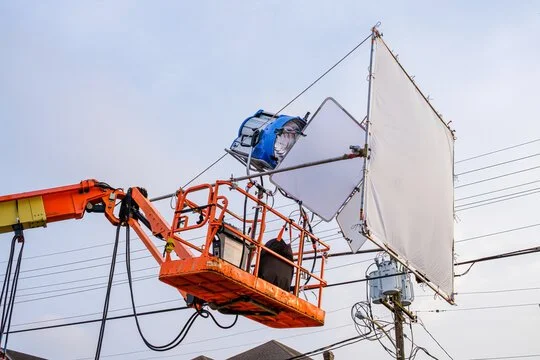Film Lighting Equipment
Lighting is a critical component of filmmaking, as it sets the tone and mood of the story being told. Whether you're a seasoned filmmaker or just starting out, understanding the different types of film lighting equipment and how to use them can make a huge impact on the look and feel of your productions.
Here's a comprehensive guide to some of the most essential film lighting equipment that you should know about:
Lights: This is the most obvious piece of equipment, but it's also the most important. There are many different types of lights to choose from, including incandescent, fluorescent, LED, and HMI, each with its own unique set of benefits and limitations.
Softboxes: Softboxes are a type of light modifier that diffuses the light from the lamp, creating a softer, more even light source. This is particularly useful when shooting close-ups, as it helps to reduce harsh shadows and highlights on the subject's face.
Reflectors: Reflectors are used to bounce light back onto a subject, filling in any shadows that may be present. They come in many different sizes and shapes, and can be made from materials such as foam board, metal, or cloth.
Gels: Gels are colored plastic sheets that can be placed over a light source to change its color temperature or hue. They're commonly used to match the lighting conditions in a scene, or to create a specific mood or atmosphere.
Boom Arms: Boom arms are used to position lights in high or hard-to-reach places. They can be mounted on a tripod or attached to a wall or ceiling, and they come in a variety of lengths to suit different needs.
Light Stands: Light stands are used to hold lights and other equipment. They come in different heights and weights, and some models have wheels for easy movement.
C-Stands: C-Stands are a type of light stand that have a distinctive "C" shape, which allows them to hold lights, flags, and other equipment securely in place.
Flags and Silks: Flags and silks are used to block or control light. They can be used to create shadows or to reduce unwanted reflections, and they come in different shapes and sizes to suit different needs.
Dimmers: Dimmers are used to control the brightness of a light source. They come in many different sizes and styles, and they're essential for creating a smooth transition between different lighting setups.
In conclusion, lighting is a critical component of filmmaking, and understanding the different types of film lighting equipment and how to use them can make a huge impact on the look and feel of your productions. Whether you're a seasoned filmmaker or just starting out, this comprehensive guide should help you get a better grasp of the essential tools of the trade.


